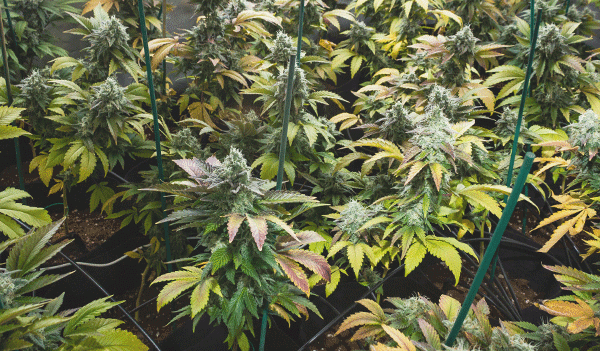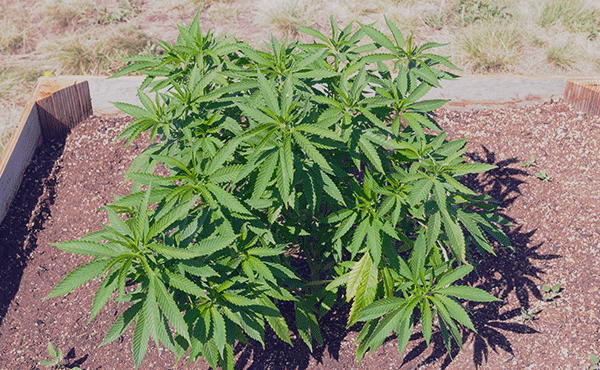Moving Cannabis Plants from Indoors to Outdoors
Published :
Aug 21, 2019
Categories :
Cannabis cultivation

There are several situations where growers may want to migrate their indoor cannabis plants outdoors. Light cycle and intensity must be carefully monitored and controlled in order to safely move plants outdoors. Moreover, migrated plants will have to be carefully protected against outdoor threats such as pests, wind, and disease.
You may eventually find yourself in a situation where your indoor-grown cannabis plants need to be moved outdoors. This can happen for any number of reasons, and successfully migrating your plants is absolutely possible. However, there are some things that you should keep in mind in order to guarantee the safety of your plants, and their ability to continue growing and flourishing.
WHY DO GROWERS MOVE THEIR CANNABIS PLANTS OUTDOORS?
The most obvious situations that may require you to move your cannabis plants outside are those that compromise the safety or integrity of your indoor grow room. Nevertheless, there are several other common scenarios, in which growers may find themselves migrating their plants outside.
For instance, some growers may choose to let their plants push through their vegetative stage indoors, before moving them outside for their flowering stage. This is often done due to the size and space restrictions of grow rooms. However, there are several factors that must be carefully considered before doing so, including the timing of the change, the time of the year, and the amount of sunlight that your plants are likely to get outdoors.
The most important thing is to avoid interrupting the plants’ natural cycles. If cannabis plants get too many hours of daylight during the switch from vegetation period to flowering, it is possible to send them into a cycle of ‘re-vegging’, which will negatively affect the plant’s ability to mature and maximise bud production. This process, called vegetative regeneration, is long and stressful for cannabis plants. It may be helpful to remember that starting on June 21st, daylight steadily decreases every day until the winter solstice on December 21st.
For a variety of reasons, some growers may also choose to migrate their cannabis plants outdoors while they are still in the vegetative phase. The main risk with moving vegging plants outdoors is the onset of premature flowering.
Similarly to migrating plants in their flowering phase, your main concern when moving plants in vegetation should be the amount of natural sunlight they receive. It is crucial to ensure that these plants receive the correct amount of sunlight each day. As such, many growers choose to wait until the end of June to make the switch, when days are the longest. Migrating them earlier, during the spring, or later during the fall may carry the risk of premature flowering.
This risk can also be mitigated by adjusting your indoor lighting schedule to match the natural schedule of sunlight. By adjusting your light schedule by a few minutes each day, you can keep the indoor and outdoor light cycles in sync.

HOW TO SAFELY MOVE INDOOR PLANTS OUTDOORS
Be aware that indoor plants may struggle to adapt to outdoor conditions. Because of lighting and environmental changes, cannabis plants may take some time to adapt to their new environment.
It is recommended that plants be progressively acclimated to their new conditions. For example, natural sunlight is much stronger than the lights typically found in grow rooms. Plus, natural sunlight simply contains a much broader spectrum of light than most indoor lights.
Neglecting to acclimate your plants and simply moving them outside can result in physical damage. The signs of stress and damage will be primarily visible on the plants’ leaves. A plant that has been directly exposed to sunlight without first being acclimated will show signs of discolouration indicative of burning or bleaching.
One way to acclimate your plants is by exposing them to natural sunlight for a few hours each week. Setting them in the shade or partial shade for the first few days, to a week, can help to prevent any immediate damage. Within a week they should be toughened up enough to handle direct sunlight for several hours a day, and within a couple of weeks they should be ready for full days of direct sunlight. This acclimation period is especially important for young and tender plants that may be particularly susceptible to the shock of powerful natural sunlight.
Lastly, remember to protect your migrated plants from pests, disease, and wind. Indoor-grown leaves are comparatively softer and are especially susceptible to penetration by pests. Therefore, regularly inspecting and controlling your migrated plants is always a good idea. As plants become better acclimated to outdoor conditions, they are typically less susceptible to pests and diseases.
Depending on local conditions, it may be necessary to be proactive in protecting your outdoor plants from wind. A little bit of wind is generally considered to be a good thing for cannabis plants, however, too much can dry them out, or even damage them. Indoor plants do not develop as strong of a main stem as their outdoor counterparts. When placed outdoors, indoor plants will require roughly a month or so in order to grow enough cellulose to really strengthen their main stem.
Moving your cannabis plants outdoors is definitely an option, and as long as you follow our simple guidelines, your plants will continue to flourish. Happy growing!







































